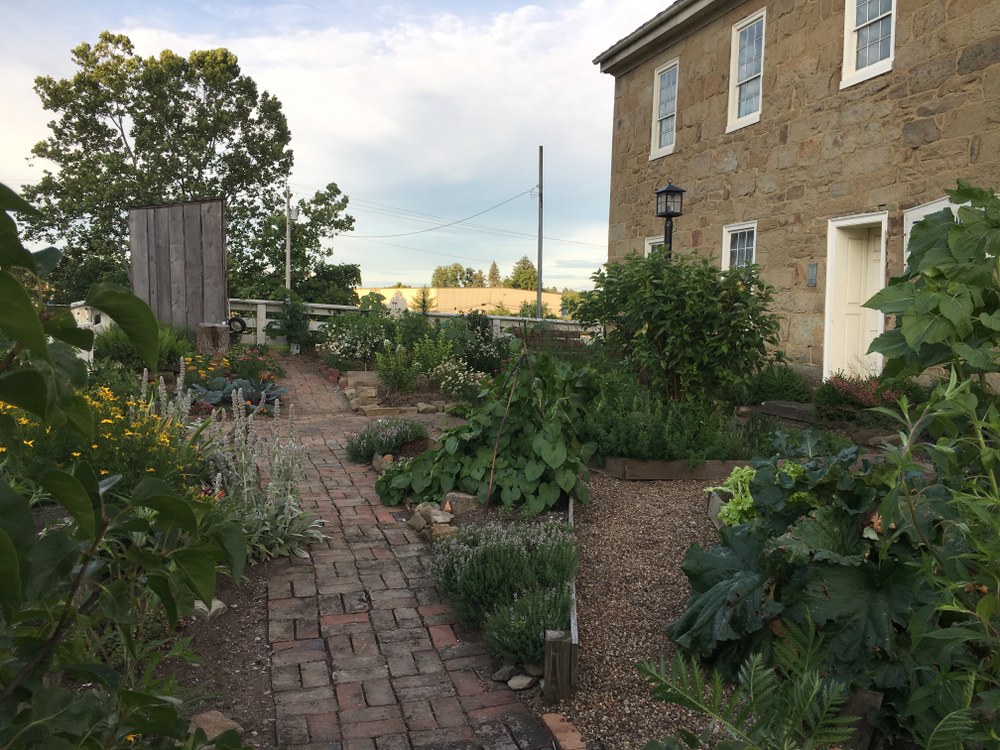The gardens at the John White House (1806/1860) and the Enoch Wright House (1815) offer an engaging historical perspective on early 19th-century gardening techniques and plants, providing visitors with an experience that connects the past to the present.

The historical garden outside the John White House was certified as Pollinator Friendly in 2018.
Step back in time and explore the historic gardens at the John White House (1806/1860) and Enoch Wright House (1815) in Washington County. Each offers a glimpse into the gardens of the area’s earliest European settlers. These gardens showcase plants and gardening methods used by early settlers while providing a comparison to modern gardening practices today.
John White House Garden
📍 Location: 2151 North Main Street, Washington, PA 15301
The John White House was built between 1804 and 1806 by a Scots-Irish miller. Once the heart of a 360-acre farm, the house, and its garden reflects the shift from subsistence farming to a market economy during the early 19th century. The stone house remains a significant example of early rural architecture, and the garden features plants that early settlers would have cultivated. The John White House was certified as Pollinator Friendly in 2018.
Enoch Wright House Garden
📍 Location: 815 Venetia Rd, Venetia, PA 15367
The Enoch Wright House, built in 1815-1816, is a National, State, and County Register-listed historical property. The gardens showcase plants and methods used during the colonial period, providing a tangible connection to the past. The house contains unique architectural features and an impressive local history collection, including a coal mining exhibit and Native American artifacts.
✨ Follow Along & Watch Us Grow!
Follow the Penn State Master Gardeners of Washington County Facebook page for the latest updates, behind-the-scenes looks, and invitations to upcoming events.

